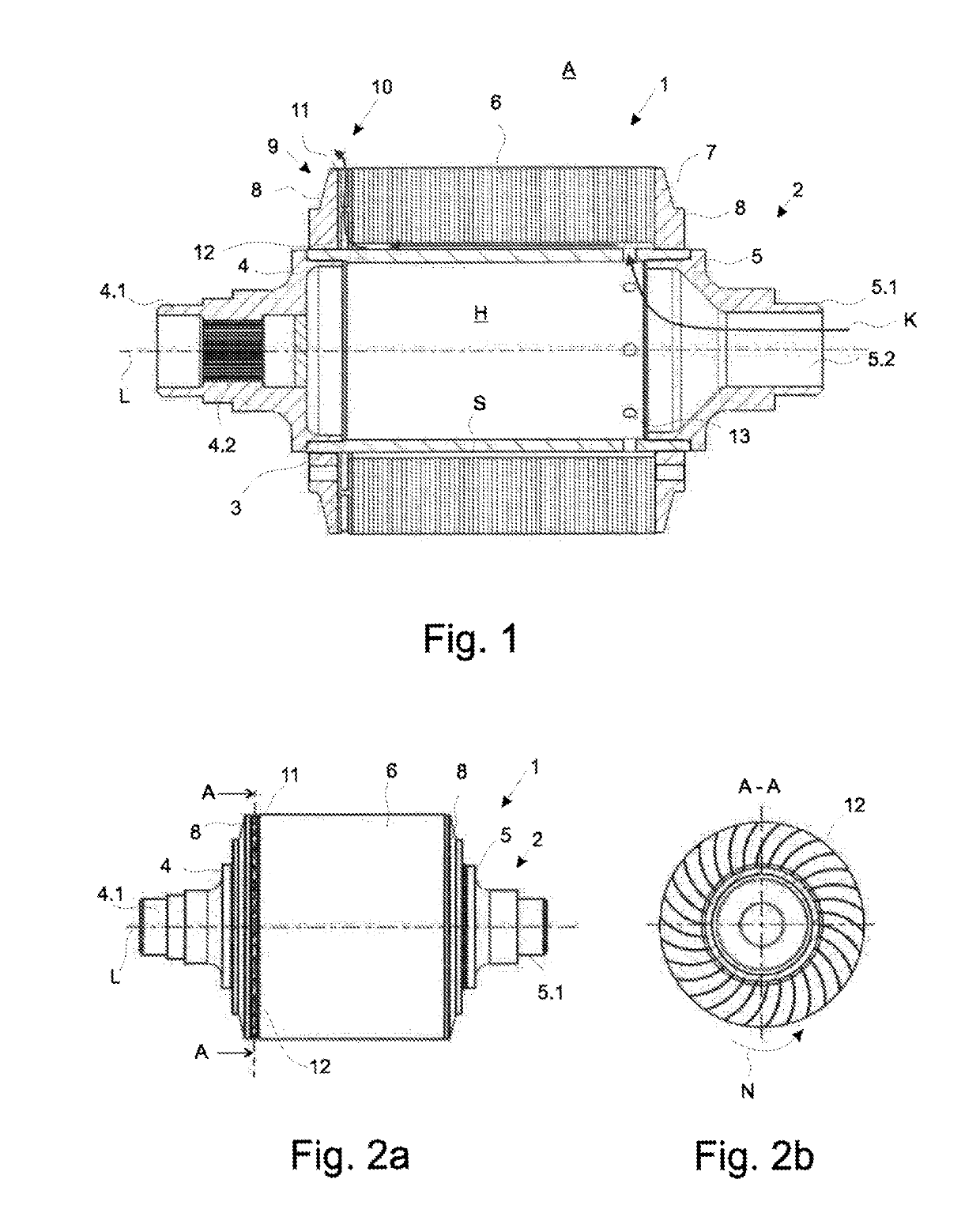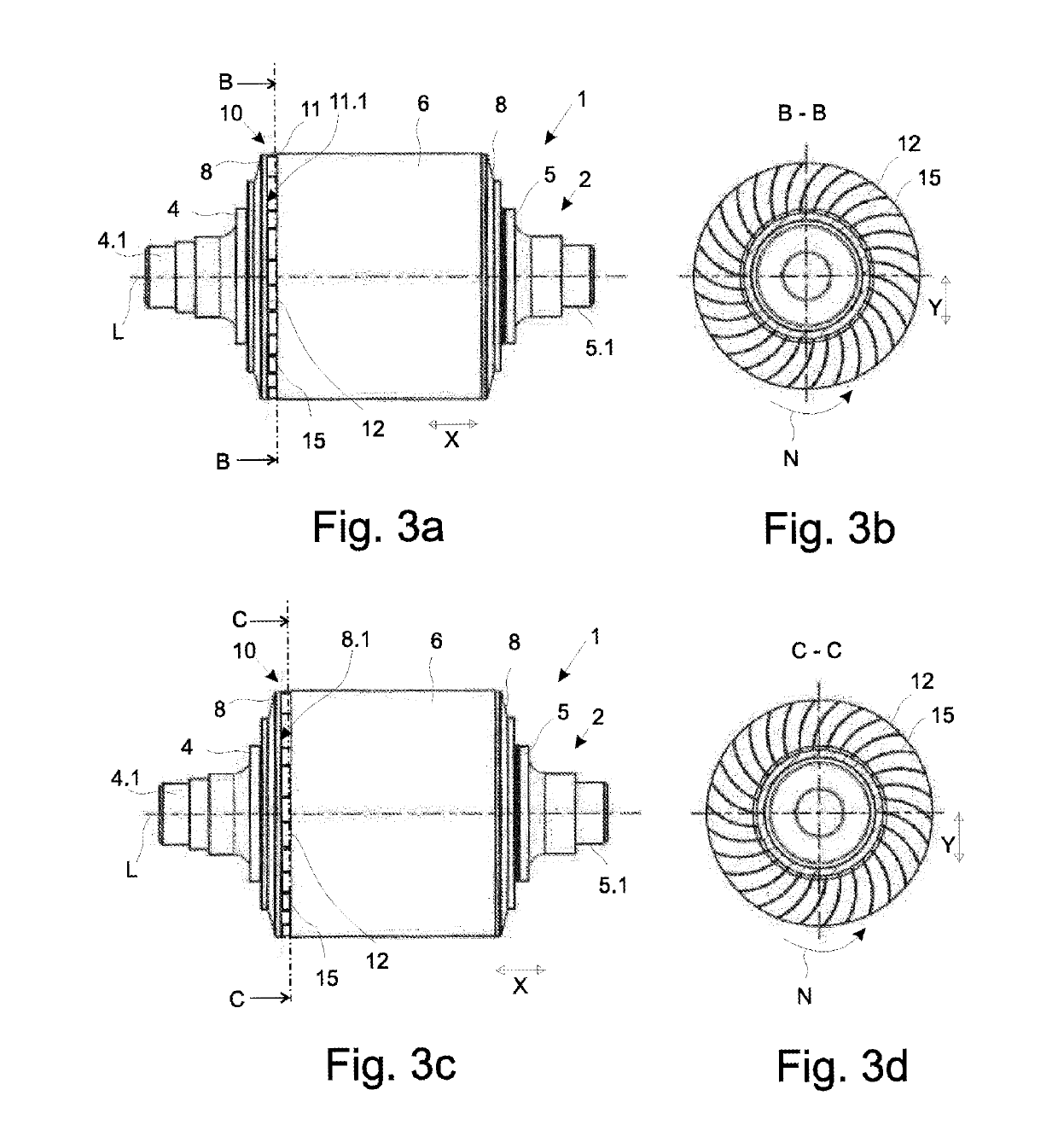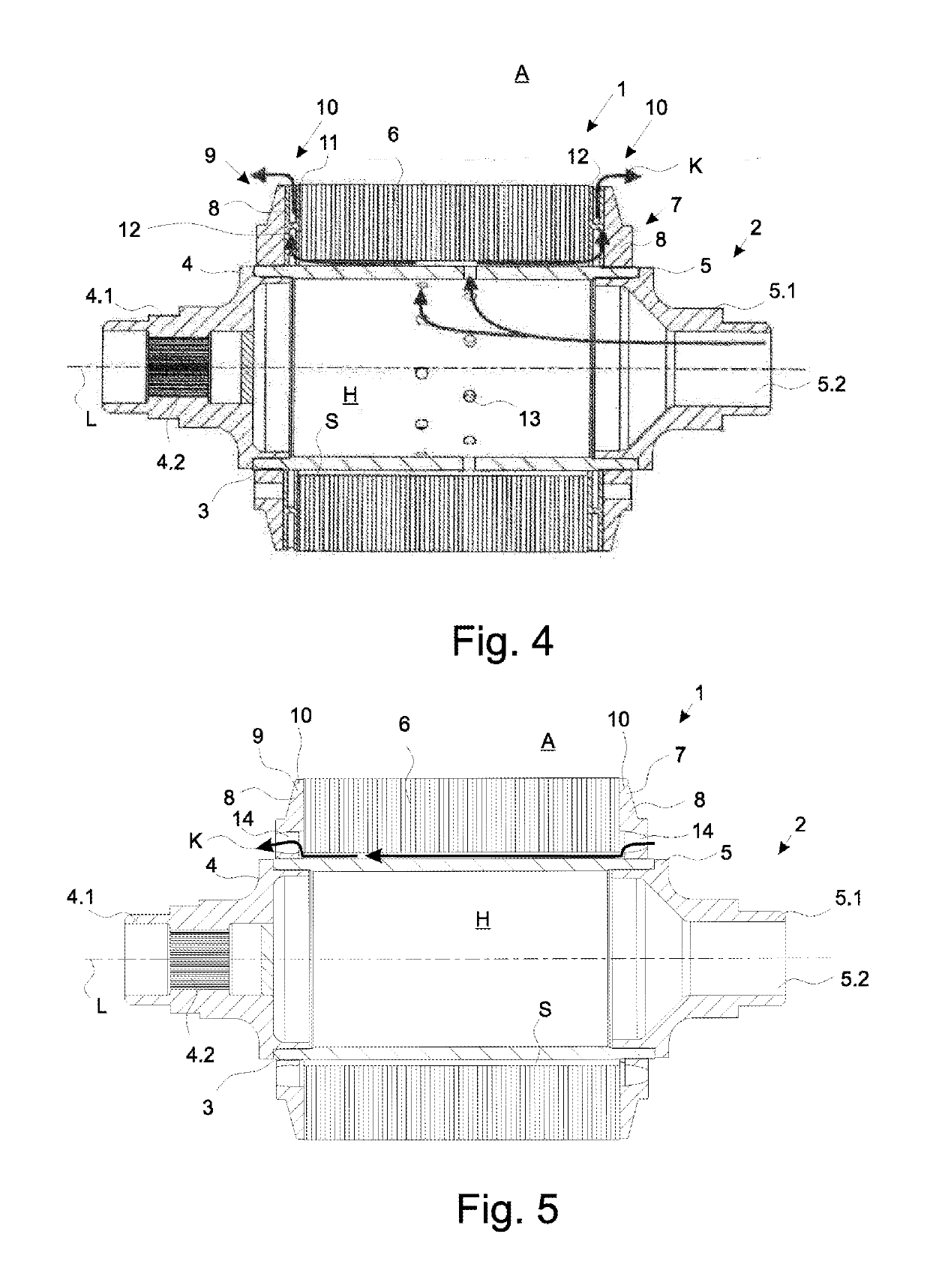Rotor segment of an electric machine
a technology of electric machines and rotors, which is applied in the direction of dynamo-electric machines, magnetic circuit rotating parts, and shape/form/construction of magnetic circuits, etc., can solve the problems of increased machining costs of laminated cores, costly manufacturing and assembly processes, and heat removal. , the effect of simple and cost-effective manner
- Summary
- Abstract
- Description
- Claims
- Application Information
AI Technical Summary
Benefits of technology
Problems solved by technology
Method used
Image
Examples
Embodiment Construction
[0028]A rotor segment according to the invention and an electric machine according to the invention shall now be explained more closely with the aid of drawings. There are shown, schematically:
[0029]FIG. 1 in a cross sectional representation, one embodiment of a rotor segment according to the invention,
[0030]FIG. 2a in a top view, the embodiment of a rotor segment according to the invention as shown in FIG. 1,
[0031]FIG. 2b in a top view, the section A to A shown in FIG. 2a
[0032]FIG. 3a in a top view, another embodiment of a rotor segment according to the invention,
[0033]FIG. 3b in a top view, the section B to B shown in FIG. 3a,
[0034]FIG. 3c in a top view, another embodiment of a rotor segment according to the invention,
[0035]FIG. 3d in a top view, the section C to C shown in FIG. 3c,
[0036]FIG. 4 in a cross sectional representation, another embodiment of a rotor segment according to the invention,
[0037]FIG. 5 in a cross sectional representation, another embodiment of a rotor segm...
PUM
 Login to View More
Login to View More Abstract
Description
Claims
Application Information
 Login to View More
Login to View More - R&D
- Intellectual Property
- Life Sciences
- Materials
- Tech Scout
- Unparalleled Data Quality
- Higher Quality Content
- 60% Fewer Hallucinations
Browse by: Latest US Patents, China's latest patents, Technical Efficacy Thesaurus, Application Domain, Technology Topic, Popular Technical Reports.
© 2025 PatSnap. All rights reserved.Legal|Privacy policy|Modern Slavery Act Transparency Statement|Sitemap|About US| Contact US: help@patsnap.com



